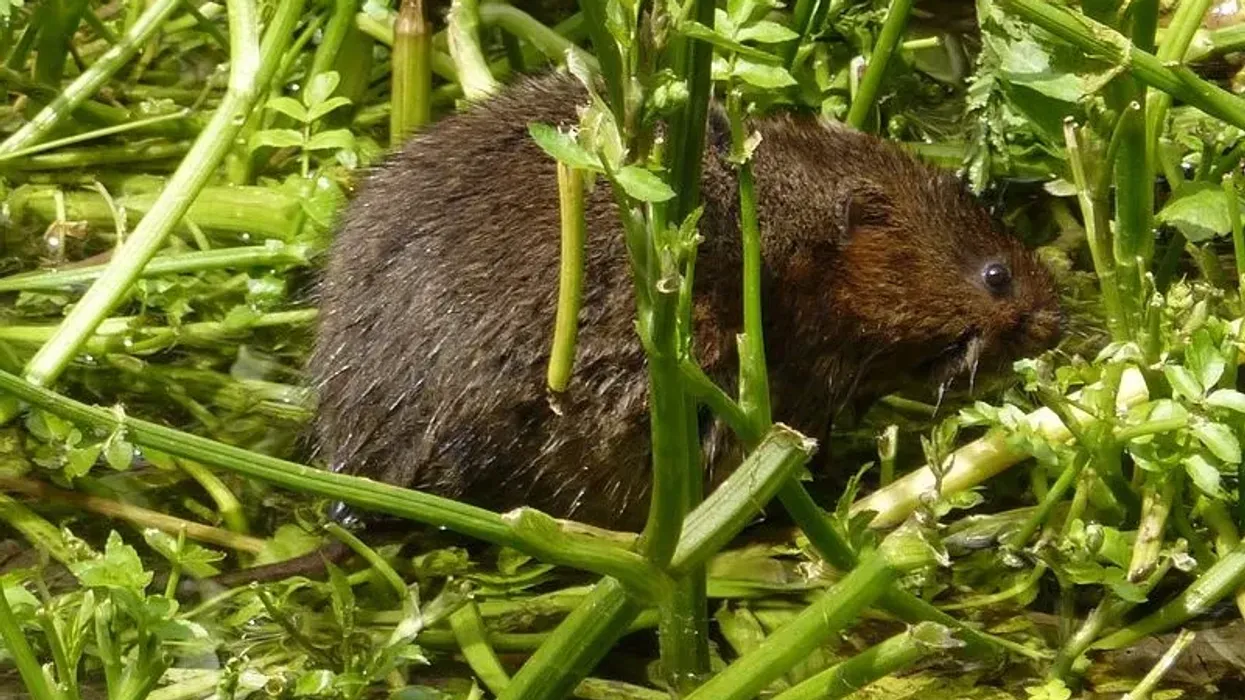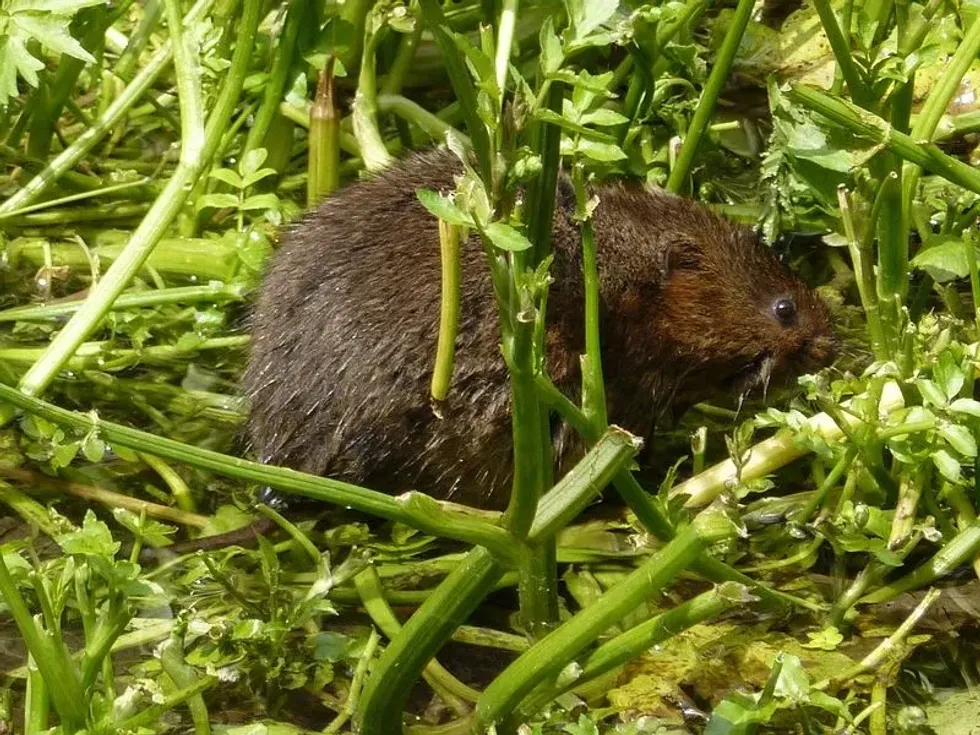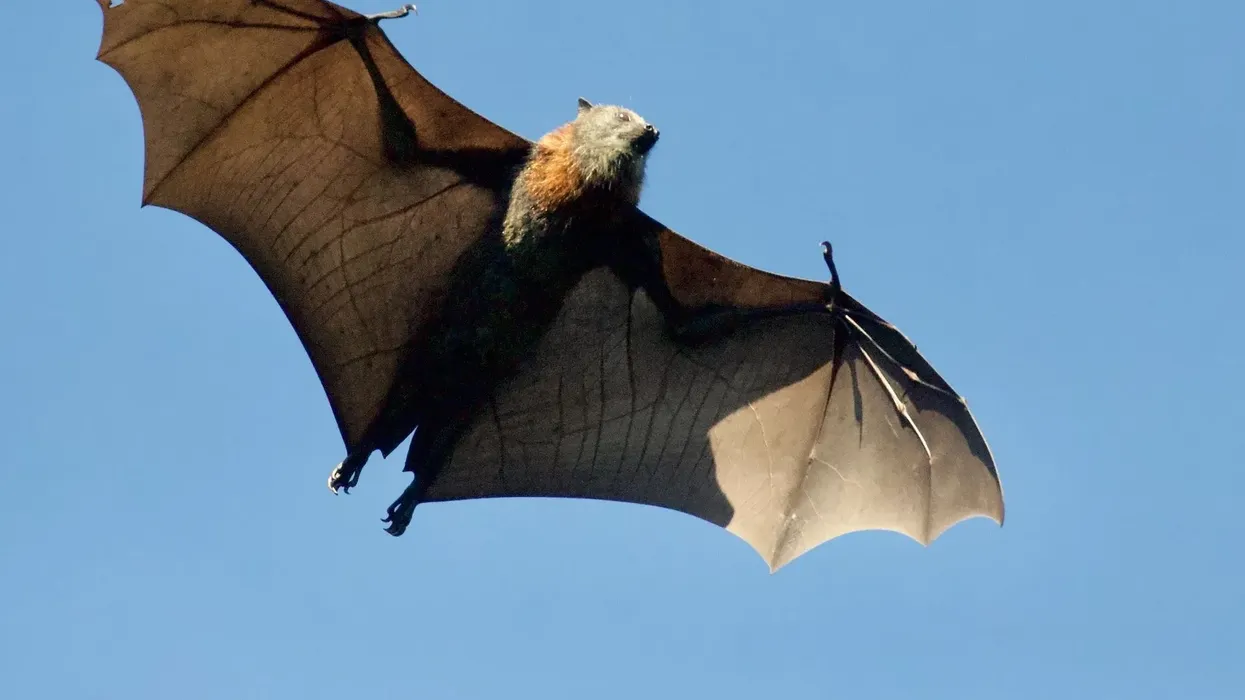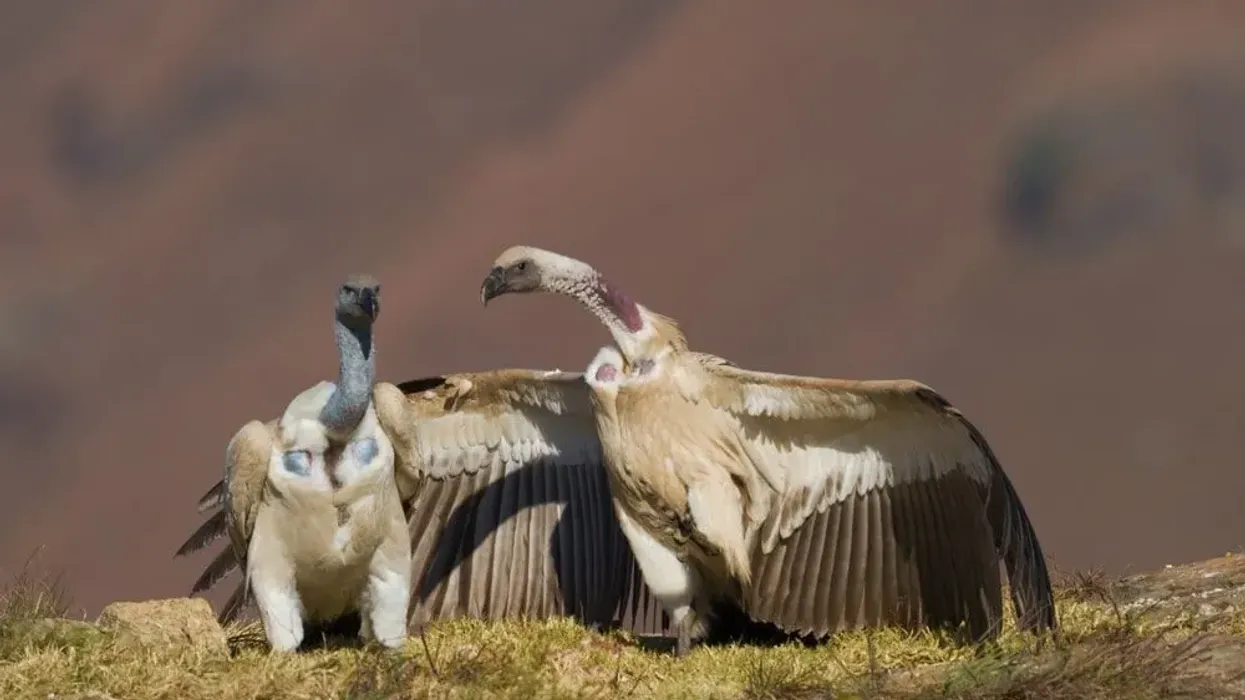Next time you go for a walk near rivers, streams or lakes, look around for small burrows, you might spot the European Water Vole peeping out of them! The European Water Vole (Arvicola amphibius) is a chubby, adorable rodent living in semi-aquatic habitats.
It is sometimes also called the Northern Water Vole, or the Water Rat, but this is purely because of its superficial resemblance to a normal rat!
These little animals are active during the day hours, hence spotting them is actually pretty easy. Their diet requirements are absolutely minimal-grass, seeds, fruits, roots! That’s all they want! They also have exceptional swimming capabilities, and adjust well to their habitat.
Unfortunately, the population of this species is declining, and measures are being taken to save water voles.
Interested to know more about the absolutely adorable northern water voles? For more relatable content, check out these white-footed mouse facts and field vole facts for kids.
European Water Vole Interesting Facts
What type of animal is a European water vole?
The European water vole is a type of rodent.
What class of animal does a European water vole belong to?
The northern water vole (Arvicola amphibius) belongs to the class of mammals.
How many European water voles are there in the world?
The last estimate of the population of the water voles was made in the year 2004, with the summed population of water voles in the United Kingdom was about 220,000. It is said that these numbers have been continually decreasing since then.
Where does a European water vole live?
You can spot this water species throughout Western Asia, Russian, Kazakhstan, and of course, Europe.
What is a European water vole's habitat?
The water vole habitat requirements are mainly semi-aquatic environments. In the British lands, you can find these voles living in burrows built near ponds, banks of rivers, streams, and ditches. They are also found to be living in the reed beds, surviving in ball-shaped nests.
These voles require lush vegetation, which would cover the entrance of their shelters from other possible predators. Thus, you wouldn’t find them in heavily grazed regions or areas with lesser riparian plantations.
In other parts of Europe, you might spot the water vole populations surviving in gardens, woods, or even the fields. In the winter months, they live beneath the snow blankets.
Who do European water voles live with?
The European water vole (Arvicola amphibius) is known to avoid living in large groups. However, they may stay in smaller units having just a few water voles.
How long does a European water vole live?
Unfortunately, the water voles live only up to five months in their natural habitat. However, in captivity, water voles live up to 2.5 years.
How do they reproduce?
The breeding season of water voles lasts from March until the late days of autumn. A total of about 3-4 weeks is the length of the female vole’s gestation period.
With such a small gestation period, the Arvicola amphibius can have about five litters in a year. She makes a small, comfortable nest made of dried grass and soft plant matter in the burrow.
Anywhere between 4-8 little, blind and hairless pups can be born, and each of them weigh just about 0.4 oz (10 g).It is after three days that newborns open their eyes.
At the time of their weaning, they are almost half the size of a fully grown water vole. The adult male vole takes absolutely no parental duties, and it is only the mother vole who is responsible for the upbringing of the offspring.
After about a month’s time, the young voles leave their families and begin an independent life. Juvenile water voles need to weigh at least about 6 oz (170 g) to survive the cold winter days.
It is said that most of the vole species follow polygony. However, European voles mate for life.
What is their conservation status?
The conservation status of the European water vole (Arvicola amphibius)is 'Least Concern'.
European Water Vole Fun Facts
What do European water voles look like?
It is quite often that the vole species are confused for rats, thus giving the European water voles an alternate name, ‘water rats’. The Northern water vole is the largest, when compared to other species of water voles located in the United Kingdom.
Voles have rounder noses when compared to rats. They usually possess dark brown fur, which fades to a paler hue on the underside. However, their fur color may vary between light brown to black.
Their pelages are really thick. This dark color allows them to camouflage with the surrounding mud and aquatic environment. They have absolutely cute, chubby faces with small fuzzy ears. Their ears, paws and even tails are all covered in hair.
They have sharp claws on each foot which helps them dig the burrows. The skin stretching between their toes are a little webbed, helping the vole adapt to the aquatic habitat and swim comfortably. The males of this species have larger bodies than the females.

How cute are they?
Absolutely adorable! These little rodents are too cute to resist!
How do they communicate?
Not much is known about the communication ways of the voles. However, this species is very territorial, and is known to scent-mark their territories by a special secretion released from their flank glands. Approaching their territories might ignite their aggression!
How big is a European water vole?
The northern water vole size is too tiny. The water voles can grow up to 5.5-8.5 in (14-22 cm), and the tail measures about half the body length.
These water voles are can grow about four times the size of the Roborovski dwarf hamster.
How fast can a European water vole run?
There is no unformation on how fast the Water Vole can run!
How much does a European water vole weigh?
The adult water voles can weigh maximum up to 7.6-13.8 oz (215.45-391.2 g). However, they generally weigh about 2-5 oz (56.7-141.75 g).
What are the male and female names of the species?
There are no separate names for the male voles and female voles.
What would you call a baby European water vole?
A baby water vole/water rat is called a 'pup'.
What do they eat?
Water voles have a pure herbivorous diet. This species feeds mainly on grass and other plant matter such as buds, herbs, bulbs, twigs, plant roots, fruits and other vegetation growing in slow-moving waters.
There have also been records of voles feeding on water snails, mollusks, mussels, tadpoles and frogs, but this is absolutely rare. They eat about 80% of their total body weight in a day.
It is said that the voles living near agricultural areas and plantations are said to destroy new harvests, spreading vole ‘plagues’ in these fields.They end up making burrows all over everywhere in the fields.
Are they dangerous?
Absolutely not, in fact the water vole/water rat is really peaceful.
Would they make a good pet?
Water voles require a semi-aquatic habitat, and thus we feel they would be comfortable in their natural habitats. Also, it might be illegal in a few regions to keep these animals as pets.
Did you know...
Confused how to differentiate between a vole and a brown rat?
Voles have round noses, whereas rats have pointy ones.
The voles have well-furred tails, whereas rats have hairless tails.
The vole has really small ears, but those of rats really pop out.
When you see the water vole swimming in the water, you can see its entire body above the water surface. For a rat, only the head sticks out of the surface of the water.
There have been good measures taken to protect the populations of water voles. Schedule 5 under the Wildlife and Countryside Act of 1981 assures full protection of the water voles in England.
There is another secret synonym for the water vole: Arvicola terrestris!
Kenneth Grahame made our water vole the star of his children’s book, ‘The Wind in the Willows’. This book came out in the year 1908, and revolved around the story of Ratty, the water vole.
Unfortunately, the water vole has been titled as the fastest declining mammal of the United Kingdom, and thus multiple measures are being taken to keep the water voles protected.
The IUCN Red List has listed the Water Voles ‘Endangered’ in regions of Wales and England, and ‘Near Threatened’ in the Scottish lands.
The water vole population is unfortunately threatened by multiple predators. Red foxes, wildcats, hawks, falcons, owls , otters, herons, rats, weasels, and even minks are some known animals to have the brown European water voles in their diet. Other reasons threatening the populations of water voles include habitat loss, soil erosion and humans.
Spotting water voles is of higher probability in the brighter hours, as these animals are super active during the day time, or even during the break of dawn and dusk.
How high can European water voles jump?
Unfortunately, we are not aware of how high these animals can jump.
The European water vole's sleep and shelter
Water voles usually resort to burrows for their shelter. These burrows are about 2.75 in (7 cm) wide.
Voles are known to dig upwards from the base of the soil, thus leaving the entrances of their homes neat, without soil obstructing the path. Even the grass around their shelters are nibbled down to make it short, thus allowing a comfortable entrance.
Water voles do not hibernate in the cold months of the winter season. However, they prefer staying in the warmth of the burrows. But in the colder months, these animals need to store food for themselves.
Thus, the water voles usually arrange a small chamber where they store food such as grass. This food is not their entire diet, but is just a backup for them in harsh conditions. They would continue leaving their shelter and searching for food in the winter months.
For more relatable content, check out these wood mouse facts and dormouse facts pages.
You can even occupy yourself at home by coloring in one of our free printable European water vole coloring pages.









